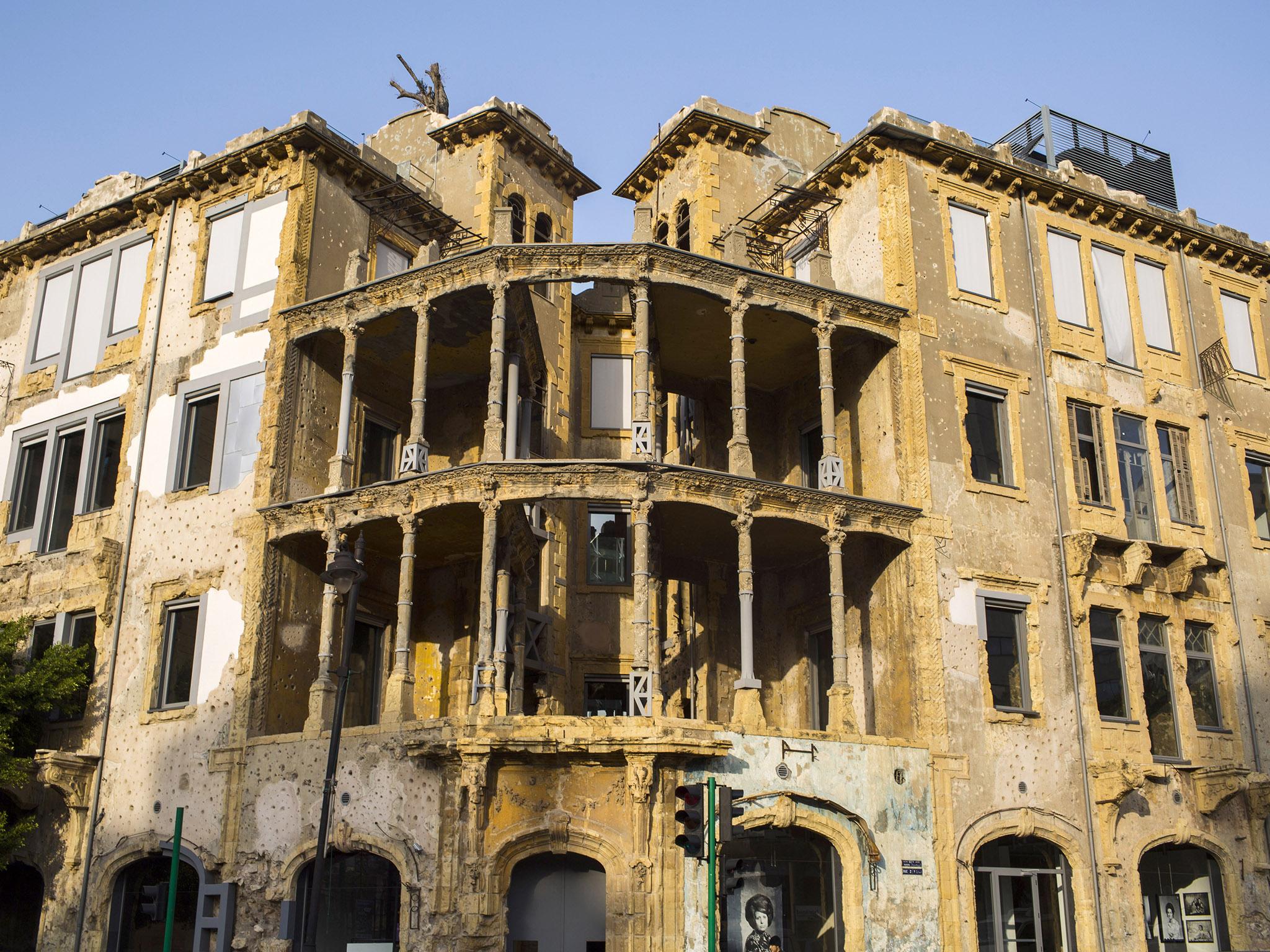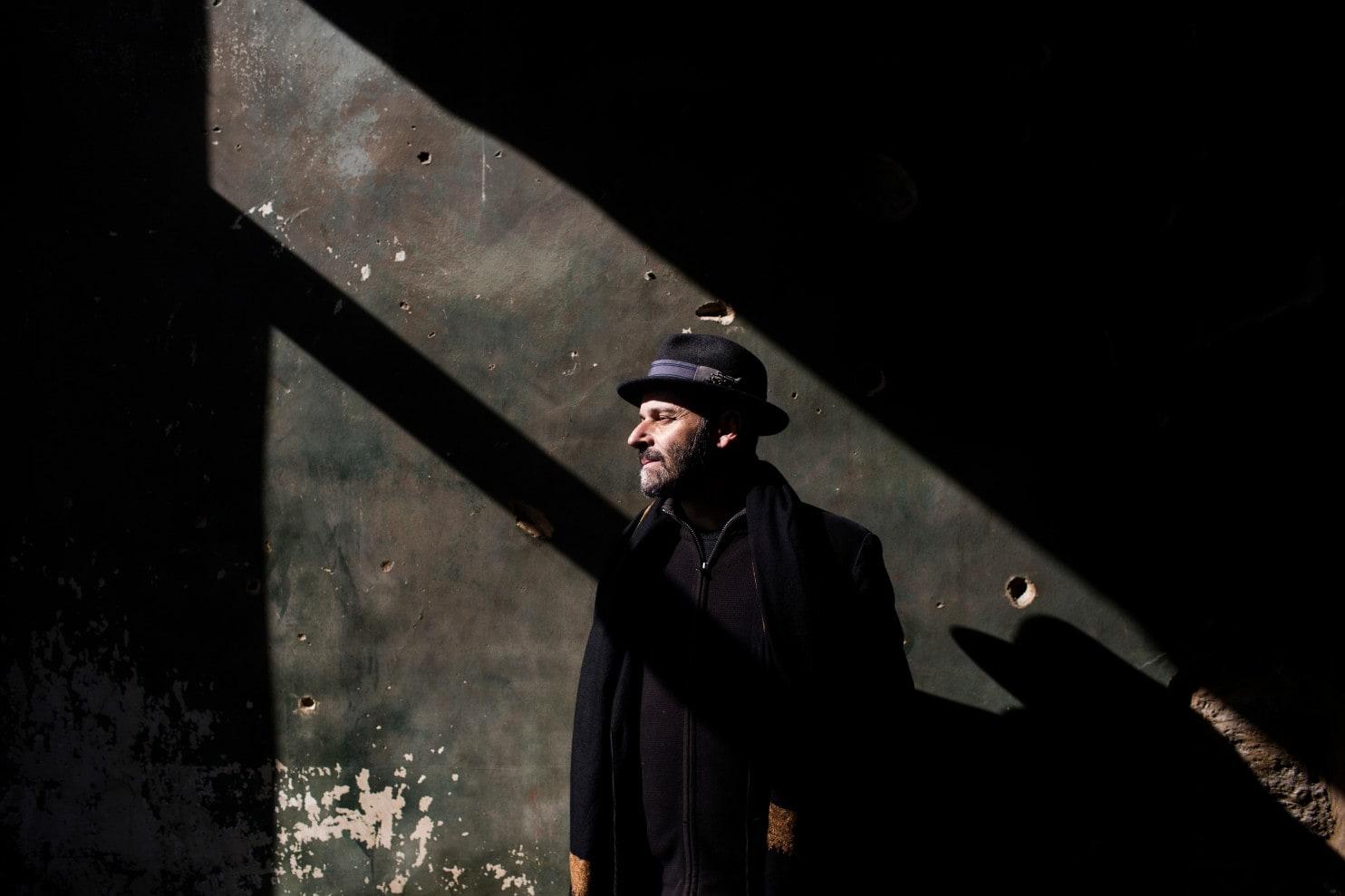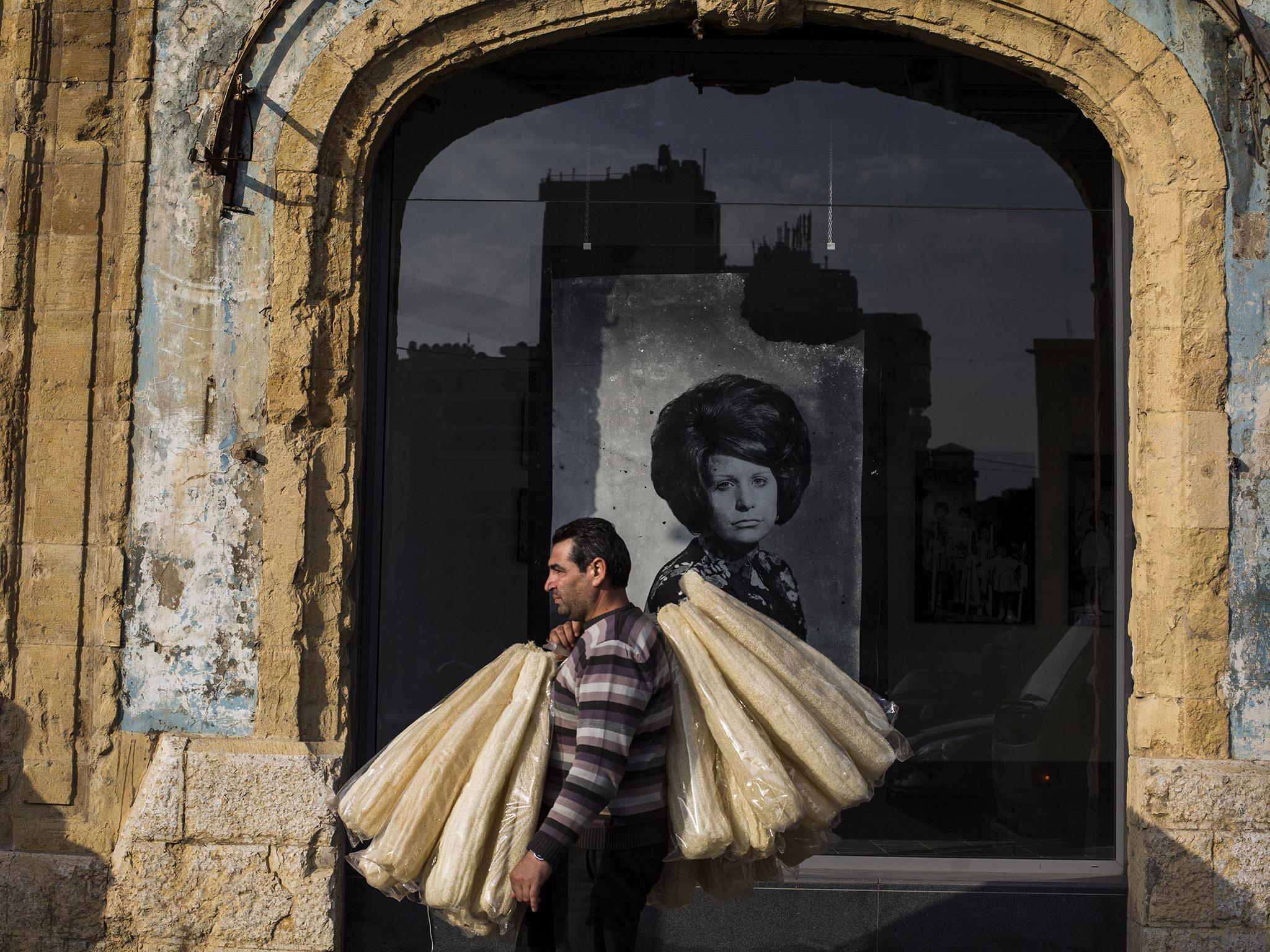Former sniper's lair is chilling reminder of Lebanon's civil war
Behind the crumbling facade of an old Beirut mansion, a ‘memory museum’ has been constructed. But in a country that remains divided, no one can decide what to put in it

Your support helps us to tell the story
From reproductive rights to climate change to Big Tech, The Independent is on the ground when the story is developing. Whether it's investigating the financials of Elon Musk's pro-Trump PAC or producing our latest documentary, 'The A Word', which shines a light on the American women fighting for reproductive rights, we know how important it is to parse out the facts from the messaging.
At such a critical moment in US history, we need reporters on the ground. Your donation allows us to keep sending journalists to speak to both sides of the story.
The Independent is trusted by Americans across the entire political spectrum. And unlike many other quality news outlets, we choose not to lock Americans out of our reporting and analysis with paywalls. We believe quality journalism should be available to everyone, paid for by those who can afford it.
Your support makes all the difference.Viewed from some angles, the yellow house appears a restatement of Ottoman elegance, its high arches and elevated terraces overlooking a district of tower blocks.
From others, it is an eyesore, its crumbling sandstone walls riddled with bullets and saved from collapse by grey steel girders.
It is supposed to be a symbol of remembrance and reconciliation.
“If the architects think that thing is meant to represent me, then they’re wrong,” says Saad Youssef, looking up at the building. “It’s ugly. They should tear it down.”
His friend, Mustafa Khattib, disagrees. “It has to stay. The Lebanese need to see this every day, because they need to remember what they did.”
During Lebanon’s 15-year civil war, the building commanded a crossroads known then as the “intersection of death”. The Christian militia that occupied the house turned it into a sniper’s nest.
Funded with an $18m (£12.9m) grant from Lebanese and French authorities, Beit Beirut was envisioned by its architects as the first memorial of its kind: a museum, archive and visitor centre to commemorate the country’s civil war. The renovation has merged the building’s skeleton into a light-filled glass one, adding archive space for a raft of documents and pods in which research staff could examine them.
Inside the old apartment building, ceilings are scorched black and a barrier of sandbags divides a room on the second floor. In makeshift bunkers – one of them formerly a blind woman’s bedroom that had been reinforced with concrete – slits have been gouged into the stonework, offering killers a view of the surrounding streets. They left graffiti, too. One just reads: “Hell.”
The questions of memory and forgiveness that Beit Beirut’s founders hope to raise are far from abstract in a country that remains heavily divided and without a common understanding of the war years.
It is not taught in history books. There is no official death toll, and thousands of families remain without answers over the fate of disappeared husbands, brothers or daughters.

“The idea was to create a space that finally allows people to come together. We have a lot of monuments in this country. Every community has its own martyrs and statues that they visit a few times a year with flowers,” says Youssef Haidar, the architect who oversaw the renovation.
But although Beit – or house of – Beirut has officially been open for months, visitors only trickle in and the gate remains closed for weeks at a time. The city’s municipal authority has yet to appoint a management committee or recruit staff, and some wings are even closed off to its architects, now that their jobs are done.
For the project’s supporters, the delays reflect the unwillingness of the political establishment to interrogate painful memories. The municipality’s cultural office says the building is in a “transitional period” while officials establish a legal framework for its operations.
Stretching from 1975 to 1990, Lebanon’s civil war pitted sectarian militias against each other as outside powers fuelled the violence. By the end, Beirut was a shattered city and the country’s social fabric had been tattered. No community escaped the war’s massacres.
“The people who carried out the war are still the ones in power, and I wonder if they are ready for this,” Haidar says.
High-ranking members of the current government – which reflects a delicately balanced confessional system shaped through a post-war accord – have links to the Christian and Muslim militias that slugged it out across the city’s front line.
“This is a building that tells the real story of what we did,” Haidar says.
Perched on the edge of downtown Beirut, the Barakat building became a home for both Christians and Muslims – many of their faces now immortalised in the negatives of a destroyed photography studio downstairs.
Construction began in 1924, and it was the architecture that brought the place to life. High-ceilinged balconies were arranged around a central atrium so neighbours could lean out and chat. Wide windows opened views over the bustling city.
It was that openness that would later make the building deadly, offering snipers a panoramic view.
The area they had presided over is barely recognisable today. Once the heart of the city, downtown Beirut was largely levelled during the war, and the multibillion dollar renovation is sterile by comparison and empties out when night falls.

Only in Beit Beirut have the traces of destruction been intentionally preserved. At the base of the building, stones are still piled up where its occupiers destroyed the lower stairwell to prevent attackers from entering. Steel girders maintain the structural integrity in places, making clear where the original stonework was lost to shelling, bullets or fire.
“Although the properties in downtown Beirut are so expensive that you can’t keep hundreds of buildings for this purpose, you can keep one to remind of what happened here,” says Reina Sarkis, a psychoanalyst and researcher on the trauma of the Lebanese war.
How the building will be used in the future is uncertain. In the surrounding blocks this week, residents voiced a mix of bemusement and frustration.
“It’s not even got proper signs,” says Najat Moubarak, sitting surrounded by stone angels in her family’s hardware store. “If it’s not advertised widely then how can it have an impact?”
She had guided three foreign tourists in Beit Beirut’s direction earlier that morning. “They came in here asking for the yellow house, so of course I showed them.” Pulling out a recent tourist map, she searched the pages for Beit Beirut – it was not marked.
Too often, the projects of dedicated individuals and organisations like the museum fail to win crucial backing from politicians, says Sarkis, who has worked extensively on her own initiatives to rehabilitate war survivors.
“Right after the war, the first people to reflect were the artists, and they have produced a lot. Journalists, writers, historians,” says Sarkis. “The problem is that if you want to take it to a different level, you need a political decision and a political will.”
Suzan Haidamous in Beirut contributed to this report
© The Washington Post
Join our commenting forum
Join thought-provoking conversations, follow other Independent readers and see their replies
Comments